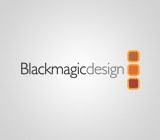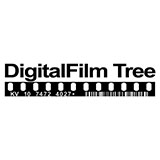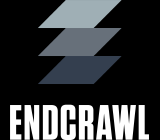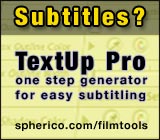|
|
|
Music concert: how to shoot multi DSLRs October 12, 2013 04:01AM |
Registered: 10 years ago Posts: 1 |
I’m a musician and recording engineer (pro/amateur). I would love to video music concerts with multiple DSLRs, but would like to bypass the audio recording from the cameras completely. I know some about audio recording, but nothing about video. If I wanted to record 2 or 3 DSLRs during a concert, how would I sync the video content? Is this a SMPTE thing or a something done with Final Cut Pro? In the past I have basically drag and dropped the audio file into the iMovie viewer, lined up the waves (used a hand clap or snare before song), trashed the camera audio and viola. Everything seemed to line up (did this per song, I’ve heard after long durations the sync go awry).
I’ve invested already in good mics, preamps, etc.. Interested in video, maybe a GH3 and one or two good lenses, but not much more (well I guess that depends on the results). Promoting musicians through video (online especially) is crucial for our survival!
Any words of wisdom are much appreciated. Thanks again for great info!
I’ve invested already in good mics, preamps, etc.. Interested in video, maybe a GH3 and one or two good lenses, but not much more (well I guess that depends on the results). Promoting musicians through video (online especially) is crucial for our survival!
Any words of wisdom are much appreciated. Thanks again for great info!
|
Re: Music concert: how to shoot multi DSLRs October 12, 2013 06:42AM |
Moderator Registered: 17 years ago Posts: 10,771 |
> but would like to bypass the audio recording from the cameras completely.
You never, ever record live video without the audio. Even if it's bad audio, it's 50 times faster to sync using an audio cue than to try to use visuals.
> Is this a SMPTE thing or a something done with Final Cut Pro?
DSLRs have no timecode, just a vague time-of-day stamp. To sync with DSLRs, using audio is your only choice, or you can use a slate with a timecode readout (not practical with multi-camera concert shoots).

www.derekmok.com
You never, ever record live video without the audio. Even if it's bad audio, it's 50 times faster to sync using an audio cue than to try to use visuals.
> Is this a SMPTE thing or a something done with Final Cut Pro?
DSLRs have no timecode, just a vague time-of-day stamp. To sync with DSLRs, using audio is your only choice, or you can use a slate with a timecode readout (not practical with multi-camera concert shoots).

www.derekmok.com
|
Re: Music concert: how to shoot multi DSLRs October 12, 2013 07:16AM |
Moderator Registered: 17 years ago Posts: 5,638 |
hi Jazz.
the simplest way to sync these sorts of things in FCP is via the waveforms of the audio.
good news is it can be automated.
if you are using FCP7, you need 3rd party software, such as Pluralyes, or the less well known WooWave.
if you are using FCPX, it has the tools built in.
i haven't used it, but FCPX is supposed to be a wizz with multi-cam,
i know it makes syncing easier, and it may well have simplified the editing process.
TimeCode CAN be an option, again using 3rd party software.
in this case i'm pretty sure it's something from Video Toolshed, but i cant remember exactly which of their products it is.
it also requires elaborate setting-up of your cameras and recorders time-settings
it's much simpler to use the waveforms!
so get some sort of recording on your DSLR, to use as a syncing guide
now a REALLY IMPORTANT thing to do is to make sure all your cameras are set to the same frame-rate.
if not you are really in for a long, arduous time, and that's before you even get to edit!
in your capacity as engineer, you would know about setting things up right from the get-go to get the best results,
so remember to double check your camera frame-rates. ESPECIALLY if you have more than one camera operator,
or are relying on friends to help out with camera work.
good luck with it all,
nick
the simplest way to sync these sorts of things in FCP is via the waveforms of the audio.
good news is it can be automated.
if you are using FCP7, you need 3rd party software, such as Pluralyes, or the less well known WooWave.
if you are using FCPX, it has the tools built in.
i haven't used it, but FCPX is supposed to be a wizz with multi-cam,
i know it makes syncing easier, and it may well have simplified the editing process.
TimeCode CAN be an option, again using 3rd party software.
in this case i'm pretty sure it's something from Video Toolshed, but i cant remember exactly which of their products it is.
it also requires elaborate setting-up of your cameras and recorders time-settings
it's much simpler to use the waveforms!
so get some sort of recording on your DSLR, to use as a syncing guide
now a REALLY IMPORTANT thing to do is to make sure all your cameras are set to the same frame-rate.
if not you are really in for a long, arduous time, and that's before you even get to edit!
in your capacity as engineer, you would know about setting things up right from the get-go to get the best results,
so remember to double check your camera frame-rates. ESPECIALLY if you have more than one camera operator,
or are relying on friends to help out with camera work.
good luck with it all,
nick
|
Re: Music concert: how to shoot multi DSLRs December 11, 2014 11:26PM |
Registered: 9 years ago Posts: 1 |
Honestly, the better option for DSLR cameras could be using visual time code with the Microframe Sync Master.
The Microframe Sync Master is a very accurate pocket size time code device that jam syncs to other Microframe units and remains synced for over 8 hours with at most 1 frame of deviation (I've seen only a 1/2 frame of deviation in 8 hours). They cost only $200 each and since most DSLR video shoots are performed with crew members that own their own cameras, each camera operator buys their own unit and they're in the game for all future shoots with time code. Each unit can be configured for different frame rates and you can even control the brightness on the fly when filming in sunlight. It's like having a Denecke slate at a fraction of the price that fits into your pocket.
What's the advantage over audio sync (as mentioned above)? The short 6 minute video in the link above explains it all. In a nutshell, you have all the options for editing without tweaking the audio and moving wave forms manually. You don't have to worry about any audio to the cameras as one is only concerned about audio to the main recorder (Sounds Devices, Tascam HD-P2, ProTools rig, etc.). For video shoots with ProTools as the main audio recorder, you need to research which SMPTE timecode cards will work with your Mac or PC rig and test they will configure in ProTools correctly. The desired result is ProTools should write time code meta data to your audio files (don't confuse this with Word Clock...WC...this is not time code!). Then, you simply take a dedicated connection from one of the Sync Master units and plug it into the TC-in on the ProTools rig (or your Sound Devices, Tascam HD-P2, etc.). The other Sync Master units for the camera operators are used to apply visual time code to each camera as soon as they hit record. Each camera must have a snap-shot of time code on the first frame for this to work.
It's possible for an 8 camera shoot to be done with just 3 Sync Masters if you're a little patient passing them around or pointing them at each camera. One unit is dedicated to the audio recorder throughout the production (plugged into TC-in). The other two can be handled by the "slate person" standing in front of the cameras with one in each hand. As each camera operator sees time code in their camera, they hit record. Then filming proceeds normally.
The video on their product page explains a lot.
Hope this helps...good luck!
The Microframe Sync Master is a very accurate pocket size time code device that jam syncs to other Microframe units and remains synced for over 8 hours with at most 1 frame of deviation (I've seen only a 1/2 frame of deviation in 8 hours). They cost only $200 each and since most DSLR video shoots are performed with crew members that own their own cameras, each camera operator buys their own unit and they're in the game for all future shoots with time code. Each unit can be configured for different frame rates and you can even control the brightness on the fly when filming in sunlight. It's like having a Denecke slate at a fraction of the price that fits into your pocket.
What's the advantage over audio sync (as mentioned above)? The short 6 minute video in the link above explains it all. In a nutshell, you have all the options for editing without tweaking the audio and moving wave forms manually. You don't have to worry about any audio to the cameras as one is only concerned about audio to the main recorder (Sounds Devices, Tascam HD-P2, ProTools rig, etc.). For video shoots with ProTools as the main audio recorder, you need to research which SMPTE timecode cards will work with your Mac or PC rig and test they will configure in ProTools correctly. The desired result is ProTools should write time code meta data to your audio files (don't confuse this with Word Clock...WC...this is not time code!). Then, you simply take a dedicated connection from one of the Sync Master units and plug it into the TC-in on the ProTools rig (or your Sound Devices, Tascam HD-P2, etc.). The other Sync Master units for the camera operators are used to apply visual time code to each camera as soon as they hit record. Each camera must have a snap-shot of time code on the first frame for this to work.
It's possible for an 8 camera shoot to be done with just 3 Sync Masters if you're a little patient passing them around or pointing them at each camera. One unit is dedicated to the audio recorder throughout the production (plugged into TC-in). The other two can be handled by the "slate person" standing in front of the cameras with one in each hand. As each camera operator sees time code in their camera, they hit record. Then filming proceeds normally.
The video on their product page explains a lot.
Hope this helps...good luck!
|
Re: Music concert: how to shoot multi DSLRs December 13, 2014 11:41AM |
Registered: 11 years ago Posts: 122 |
My vote would be . .
- to record audio on all cameras whilst shooting
- record pro audio separately i.e get a feed from the sound guy / mixer
- then use the Pluraleyes to auto-sync your rushes.
If I understand what it is you're trying to do this may be easier or work just as well as other suggestions here.
WM
- to record audio on all cameras whilst shooting
- record pro audio separately i.e get a feed from the sound guy / mixer
- then use the Pluraleyes to auto-sync your rushes.
If I understand what it is you're trying to do this may be easier or work just as well as other suggestions here.
WM
Sorry, only registered users may post in this forum.



 All the news now and in your digital future
All the news now and in your digital future